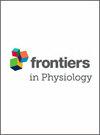VO2MAX、6 分钟步行时间和肌肉力量均与美国退伍军人的虚弱程度有关
IF 3.2
3区 医学
Q2 PHYSIOLOGY
引用次数: 0
摘要
导言虚弱通常表现为更容易出现不良后果,检测虚弱有助于做出明智的医疗决策。退伍军人患虚弱症的风险较高,而且年龄较轻。本研究的目的是调查退伍军人的体弱生理基础,包括最大摄氧量(VO2max)、6 分钟步行、肌肉力量和炎症生物标志物。纳入标准:年龄在 60-85 岁之间,男女不限,任何种族,无严重合并症或认知障碍。结果测量包括:弗里德虚弱表型、短期体能测试(SPPB)、使用 Q-LES-Q-SF 的生活质量(QOL)以及以下生理评估:直立固定自行车的最大容氧量评估、6 分钟步行、手臂和腿部力量。此外,还使用 ELLA 单一和多重 ELISA 测量了炎症生物标志物(C 反应蛋白、IL-6、IL-10、干扰素-γ 和 TNF-α):年龄为 70.3 ± 7.4 岁:34 名男性和 8 名女性,体重指数 = 30.7 ± 5.4 kg/m2,26 名白人和 16 名非洲裔美国人。共有 18 人(42.8%)不虚弱,20 人(47.6%)虚弱前期,4 人(9.5%)虚弱。VO2max 与 Fried 虚弱评分呈负相关(r = -0.40,p = 0.03,N = 30),与 SPPB 评分呈正相关(r = 0.50,p = 0.005),与 QOL 呈正相关(r = 0.40,p = 0.03)。6 分钟步行测试也与最大容氧量(r = 0.57,p = 0.001,N = 42)和 SPPB(r = 0.55,p = 0.0006)显著相关,但与虚弱程度(r = -0.28,p = 0.07)的相关性不大。臂力与虚弱呈负相关(r = -0.47,p = 0.02,N = 26),但与其他参数无关。结论在这组老年退伍军人中,客观测量的心肺功能与重要的功能结果(包括身体表现、QOL 和虚弱程度)相关。此外,6 分钟步行测试与最大容氧量和 SPPB 相关,但需要更多的验证来确认对虚弱的敏感性。臂力也可能是衡量虚弱程度的一个重要指标,但与其他体能指标的关系尚不清楚。本文章由计算机程序翻译,如有差异,请以英文原文为准。
VO2MAX, 6-minute walk, and muscle strength each correlate with frailty in US veterans
IntroductionFrailty often manifests as an increased vulnerability to adverse outcomes, and detecting frailty is useful for informed healthcare decisions. Veterans are at higher risk for developing frailty and at younger ages. The goal of this study was to investigate approaches in Veterans that can better inform the physiologic underpinnings of frailty, including maximal oxygen uptake (VO2max), 6-min walk, muscle strength, and inflammatory biomarkers.MethodsParticipants (N = 42) were recruited from the Buffalo VA Medical Center. Inclusion criteria: ages 60–85, male or female, any race, and not having significant comorbidities or cognitive impairment. Outcome measures included: the Fried frailty phenotype, the short physical performance battery (SPPB), quality of life (QOL) using the Q-LES-Q-SF, and the following physiologic assessments: VO2max assessment on an upright stationary bicycle, 6-min walk, and arm and leg strength. Additionally, inflammatory biomarkers (C-reactive protein, IL-6, IL-10, interferon-γ, and TNF-α) were measured using ELLA single and multiplex ELISA.ResultsParticipants: 70.3 ± 7.4 years of age: 34 males and 8 females, BMI = 30.7 ± 5.4 kg/m2 , 26 white and 16 African American. A total of 18 (42.8%) were non-frail, 20 (47.6%) were pre-frail, and 4 (9.5%) were frail. VO2max negatively correlated with Fried frailty scores (r = −0.40, p = 0.03, N = 30), and positively correlated with SPPB scores (r = 0.50, p = 0.005), and QOL (r = 0.40, p = 0.03). The 6-min walk test also significantly correlated with VO2max (r = 0.57, p = 0.001, N = 42) and SPPB (r = 0.55, p = 0.0006), but did not quite reach a significant association with frailty (r = −0.28, p = 0.07). Arm strength negatively correlated with frailty (r = −0.47, p = 0.02, N = 26), but not other parameters. Inflammatory profiles did not differ between non-frail and pre-frail/frail participants.ConclusionObjectively measured cardiorespiratory fitness was associated with important functional outcomes including physical performance, QOL, and frailty in this group of older Veterans. Furthermore, the 6-min walk test correlated with VO2max and SPPB, but more validation is necessary to confirm sensitivity for frailty. Arm strength may also be an important indicator of frailty, however the relationship to other indicators of physical performance is unclear.
求助全文
通过发布文献求助,成功后即可免费获取论文全文。
去求助
来源期刊

Frontiers in Physiology
PHYSIOLOGY-
CiteScore
6.50
自引率
5.00%
发文量
2608
审稿时长
14 weeks
期刊介绍:
Frontiers in Physiology is a leading journal in its field, publishing rigorously peer-reviewed research on the physiology of living systems, from the subcellular and molecular domains to the intact organism, and its interaction with the environment. Field Chief Editor George E. Billman at the Ohio State University Columbus is supported by an outstanding Editorial Board of international researchers. This multidisciplinary open-access journal is at the forefront of disseminating and communicating scientific knowledge and impactful discoveries to researchers, academics, clinicians and the public worldwide.
 求助内容:
求助内容: 应助结果提醒方式:
应助结果提醒方式:


